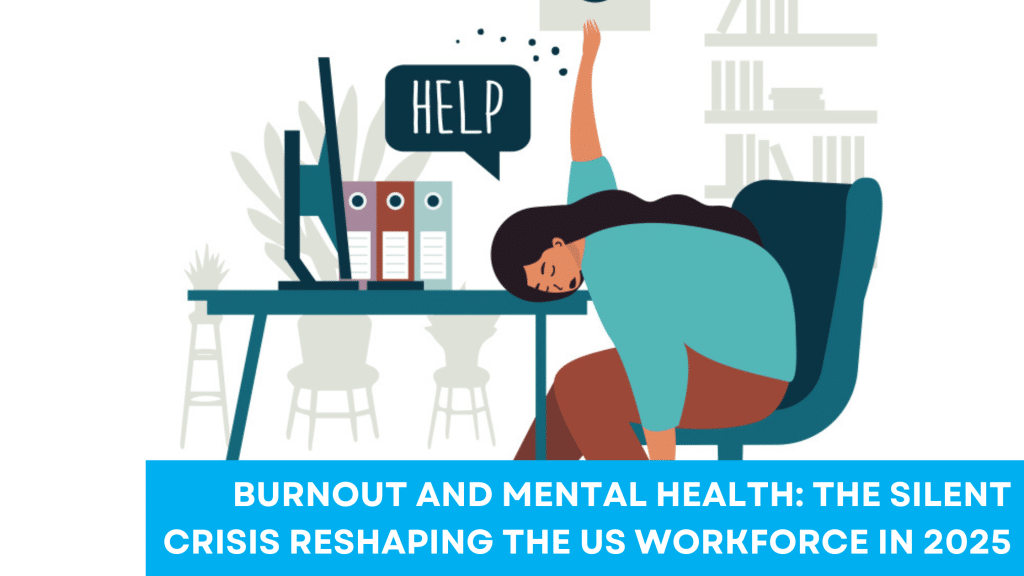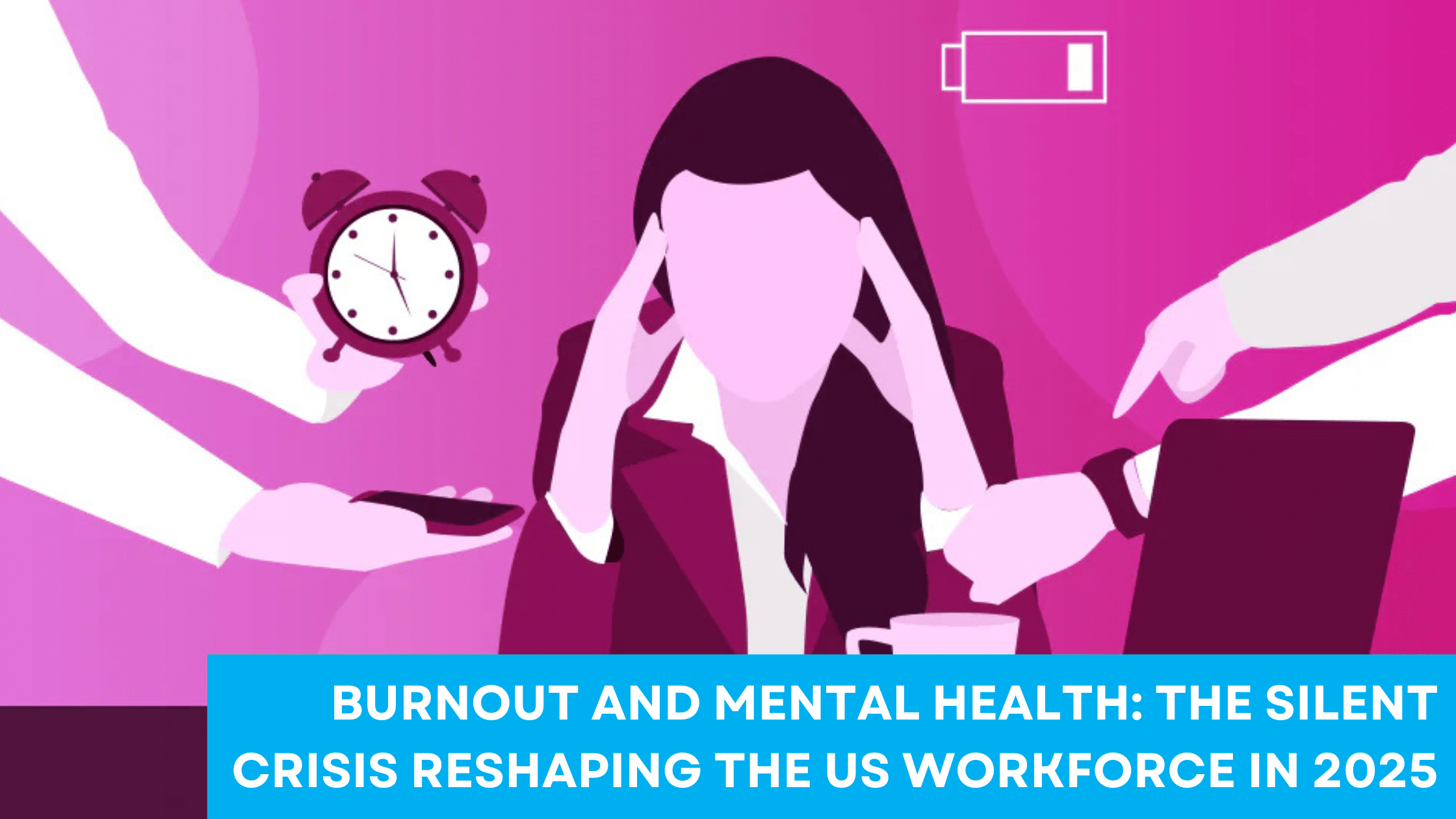Introduction: A Workforce Under Siege
In 2025, the mental health of the American workforce will have reached a critical juncture. While conversations around workplace well-being have gained traction in recent years, the latest data reveal a deepening crisis of burnout, stress, and low mood that threatens individual lives and organizational performance alike. The lingering effects of the COVID-19 pandemic, compounded by global political turmoil, economic uncertainty, and workplace pressures, have created a perfect storm that employers and employees can no longer ignore.
The Scale and Severity of the Crisis
A Nation Struggling with Mental Health
According to the 2025 NAMI Workplace Mental Health Poll, a majority of full-time workers acknowledge the importance of mental health but feel ill-equipped to manage it at work due to persistent stigma and lack of support. Complementing this, a survey commissioned by Modern Health found that 75% of US employees reported experiencing some form of low mood, primarily attributed to the turbulence of global politics and current events. This low mood is not fleeting; it reflects a sustained mental health burden that has worsened since the pandemic.
The PLANSPONSOR 2025 workforce mental health survey further highlights the magnitude of the problem:
- 44% of employees feel burned out regularly.
- 51% report feeling “used up” at the end of the workday.
- Younger workers are especially vulnerable, with 84% of Millennials and 68% of Gen Z experiencing significant burnout.
The Hidden Costs of Burnout
The consequences of this epidemic extend beyond individual suffering:
- Productivity losses linked to unresolved depression and burnout reach 35%, costing organizations $210.5 billion annually in absenteeism, reduced output, and medical expenses.
- Disengagement is rampant, with 62% of employees feeling disconnected, contributing to a global productivity loss of $8.8 trillion annually.
- Mental health challenges drive turnover: 38% of employees are less likely to stay at their current job due to inadequate mental health resources, a figure rising to 60% among Gen Z.
What’s Driving This Crisis?
1. Global Political and Economic Turmoil
Nearly 96% of workers follow news about global political or economic upheaval, with many citing these stories as the most harmful to their mental health. Political tensions and uncertainty have seeped into workplace culture, with 71% of employees believing political strife undermines a positive work environment, and 74% linking political uncertainty to increased burnout. This external stress is inescapable and deeply personal for many, influencing career choices and daily well-being.
2. Economic Insecurity and Job Pressures
Fears of recession, layoffs, and automation loom large. 81% of workers worry about job security, and 76% expect layoffs to rise in 2025. The “do more with less” mentality prevalent in many organizations post-pandemic has intensified pressure, with 48% of employees stating it has harmed their mental health. Workers often feel trapped between high expectations and limited resources.
3. Inadequate Workplace Support and Persistent Stigma
Despite growing awareness, only 36% of employees feel their employer provides adequate mental health coverage, and 81% believe more benefits are needed. Many employees hesitate to disclose struggles due to stigma; 62% feel pressured to work through burnout, fearing negative career repercussions. The NAMI/Ipsos poll underscores that workplaces are not yet safe spaces for open mental health conversations, leaving many isolated.

The Human Impact: Voices from the Workforce
A project manager, Sarah shares, “I’m exhausted but afraid to take time off. I don’t want to be seen as weak or replaceable.” James, a nurse, describes relentless staffing shortages and emotional fatigue five years after the pandemic. Their stories echo across sectors, from healthcare to technology, illustrating the human toll behind the statistics.
Organizational Consequences: Why Employers Must Act
Burnout is not just a personal issue- it undermines business outcomes:
- Increased absenteeism and turnover inflate recruitment and training costs.
- Disengaged employees contribute to lower innovation and compromised quality.
- Poor mental health harms the employer brand and risks legal liabilities.
Conversely, companies prioritizing mental health reap benefits. Workplaces with strong mental health support see 13% higher productivity, 2.3 times less stress, and 2.6 times reduced absenteeism.
Strategies to Address Burnout and Mental Health
1. Normalize Mental Health Conversations
Leadership must openly discuss mental health, modeling vulnerability to reduce stigma and encourage help-seeking behaviors.
2. Expand and Improve Mental Health Benefits
Benefits should be comprehensive, accessible, and tailored to current realities, including teletherapy and crisis support.
3. Redesign Workloads and Expectations
Organizations must reassess productivity goals, encourage flexibility, and protect employees’ personal time to prevent exhaustion.
4. Train Managers as Mental Health Allies
Managers need training to recognize burnout signs, provide empathetic support, and connect employees to resources.
5. Continuously Listen and Adapt
Regular employee surveys and feedback loops ensure mental health initiatives meet evolving needs.
Conclusion: A Call to Action
The mental health crisis in the US workforce is urgent and complex. But it is also an opportunity for transformative change. Employers who prioritize authentic mental health support will foster resilience, engagement, and long-term success. Employees must know they are not alone and that their well-being matters. Together, they can build a future of work that is sustainable, supportive, and humane.



